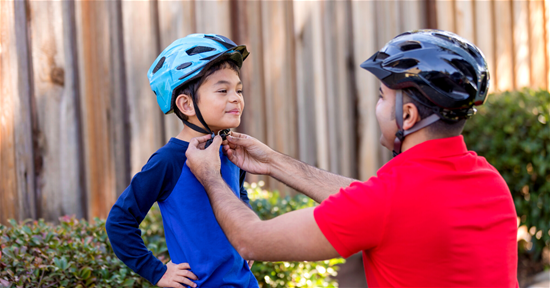- 855.471.2589
- Schedule a Tour
 Did you know that the first week of September is National Childhood Injury Prevention Week? This week is a time for raising awareness of child safety measures, preventing injuries, and saving lives.
Did you know that the first week of September is National Childhood Injury Prevention Week? This week is a time for raising awareness of child safety measures, preventing injuries, and saving lives.
According to the CDC, more than 7,000 children and teens aged 0–19 died because of unintentional injury in 2019. The leading causes of child injury include motor vehicle crashes, suffocation, drowning, poisoning, fires, and falls, most commonly occurring at home.
It is important to child-proof your home, use appropriate safety equipment, and supervise children at play.
Child injury is predictable and preventable.
10 Easy ways to reduce child injury:
- Monitor children in the home and at play
- Stay within close proximity to children while they play. This includes, sight, and sound.
- Be aware of small items that could be choking hazards
- Remove tripping and falling hazards around your house
- Attached to the wall, approved safety gates at the top and bottom of stairs
- Install window guards and stops so the window can only open a few inches.
- Child-proof cupboards and drawers
- Keep sharp utensils out of reach
- Keep all cleaning supplies in a higher cupboard instead of down low.
- Teach children about fire safety and burn prevention
- Have a plan for young children who cannot get outside by themselves.
- Keep children 3 feet away from anything that can get hot.
- Store medicine out of reach of children
- Pick a storage place in your home that children cannot reach or see.
- Put medicines away every time.
- Teach children road safety
- Cross streets at a designated crosswalk with an adult.
- Teach children to get an adult if a ball or toy goes into the street.
- Place children in the proper booster or car seat
- Transportation Safety Buckle Up: Restraint Use State Fact Sheets | Motor Vehicle Safety | CDC Injury Center
- Children should wear the proper helmet for each activity
- Helmets should be age appropriate, well maintained, and appropriately certified for use.
- Teach basic swimming and water safety skills.
- Build fences that fully enclose pools
- Know the risk of natural waters
- Practice safe sleep strategies to help reduce suffocation
- Always place your infant on his or her back for all sleep times.
- Be sure to use a firm, flat sleep surface, covered by a fitted sheet.
With proper planning and recognizing possible dangers, you can help to reduce the possible risk of child injuries in your home.
